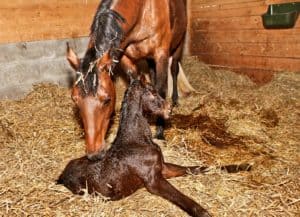UKVDL Map of the Month: EHV-1 Abortions in the 2019 Foal Crop

Equine herpesvirus-1 spreads in nasal discharge or aerosol droplets. Horses can also contract the virus via contaminated surfaces such as stalls, water, feed, tack, transportation vehicles, or people’s contaminated hands and clothing from being around another affected horse.
This relatively common virus’ incubation period ranges from two to 10 days. Clinical signs of respiratory EHV-1 infection include fever, nasal discharge, and lethargy/depression. Infected horses can shed the virus even when showing no clinical signs.
Disease caused by EHV-1 can be mild or can be more severe, potentially resulting in late-term abortion in pregnant mares and/or severe neurologic disease. Equine herpesvirus myeloencephalitis, EHV’s neurologic form, is rare
Create a free account with TheHorse.com to view this content.
TheHorse.com is home to thousands of free articles about horse health care. In order to access some of our exclusive free content, you must be signed into TheHorse.com.
Start your free account today!
Already have an account?
and continue reading.
Written by:
University of Kentucky College of Agriculture, Food and Environment
Related Articles
Stay on top of the most recent Horse Health news with















